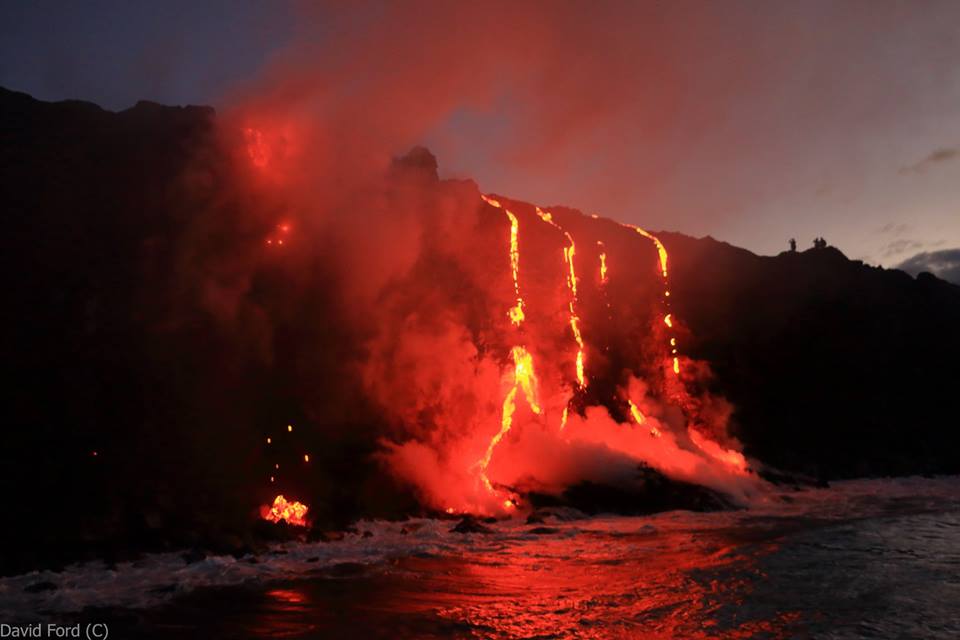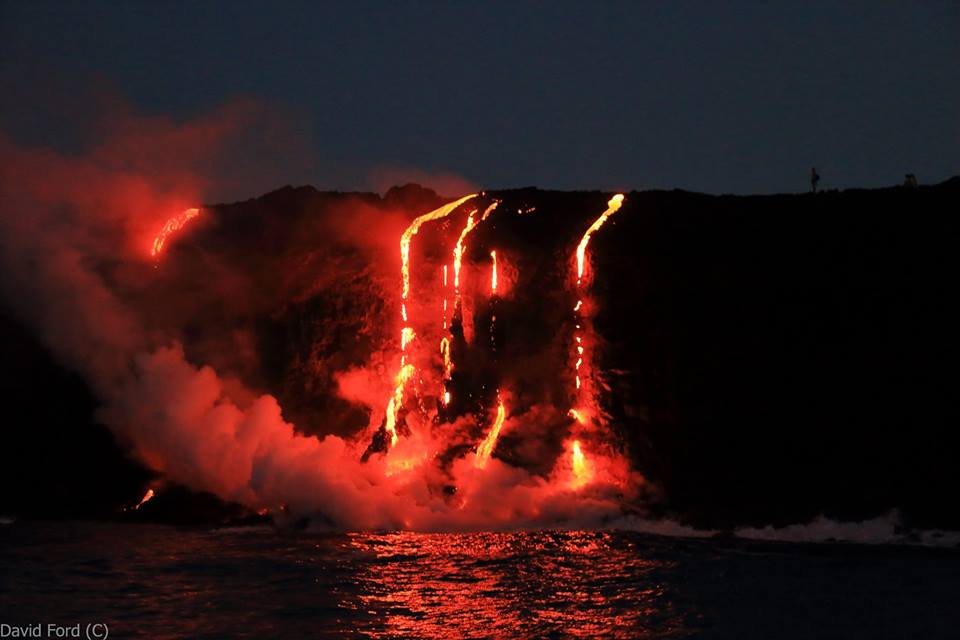Eruptive activity continues at Kilauea Volcano’s summit and East Rift Zone.
The 61G lava flow extending southeast of Pu’u ‘O’ō entered the ocean, as of 1:12 a.m. HST., for the first time in three years, but poses no threat to nearby communities.

As shown in the following pictures, the 61G lava flow extending southeast of Pu’u ‘O’ō entered the ocean on July 26, 2016. However, seismicity and deformation rates throughout the volcano remain at background levels. Finally, the lava lake at Halema’uma’u Crater continues to circulate and intermittently spatter.

Lava lake at Halema’uma’u Crater
The depth of the magma reservoir was estimated at 25.5 m (84 ft) below the crater rim. Seismicity is within normal, background rates with tremor fluctuations associated with lava lake spattering. The summit sulfur dioxide emission rate ranged from 2,400 to 5,000 metric tons/day.

Pu’u ‘O’ō Observations:
Webcam images over the past 24 hours show persistent glow at long-term sources within the crater. There were no significant changes in seismicity or tilt over the past 24 hours. The sulfur dioxide emission rate from all East Rift Zone vents on July 25 was about 280 metric tons/day.

Lava Flow Observations:
The 61G lava flow extending southeast of Pu’u ‘O’ō towards the coastal plain on Kilauea’s south flank remains active.

Here in video:
The flow reached the coastal road for emergency access on July 25 at 3:20 p.m. local, and crossed it in 30 minutes.

At 16h, the lava front was about 110 meters from the ocean. The 61G lava flow extending southeast of Pu’u ‘O’ō entered the ocean, as of as of 1:12 a.m. HST, on July 26, 2016.

Areas of incandescence remain visible in overnight webcam views of the active lava flow field, marking lava tube skylights and areas of active lava on the pali and along the flow as it extends towards the coast.
Caution
The new ocean entry (location where lava meets the sea) for Flow 61G is awesome but dangerous to visit. This ncredible footage from Hawaii captures lava from active volcanoes engulfing a forest:

- Venturing too close to an ocean entry exposes you to flying debris created by the explosive interaction between lava and water.
- Also, the new land created is unstable because it is built on unconsolidated lava fragments and sand. This loose material can easily be eroded away by surf causing the new land to become unsupported and slide into the sea.
- The interaction of lava with the ocean creates an acidic plume laden with fine volcanic particles that can irritate the skin, eyes, and lungs.













[…] Eruptive activity continues at Kilauea Volcano’s summit and East Rift Zone. The 61G lava flow extending southeast of Pu’u ‘O’ō entered the ocean, as of 1:12 a.m. HST., for the first time in three years, but poses no threat to nearby communities. As shown in the following pictures, the 61G lava flow extending southeast of Pu’u ‘O’ō entered the ocean on July 26, 2016. However, seismicity and deformation rates throughout the volcano remain at background levels. Finally, the lava lake at Halema’uma’u Crater continues to circulate and intermittently spatter…. [see and watch more] […]